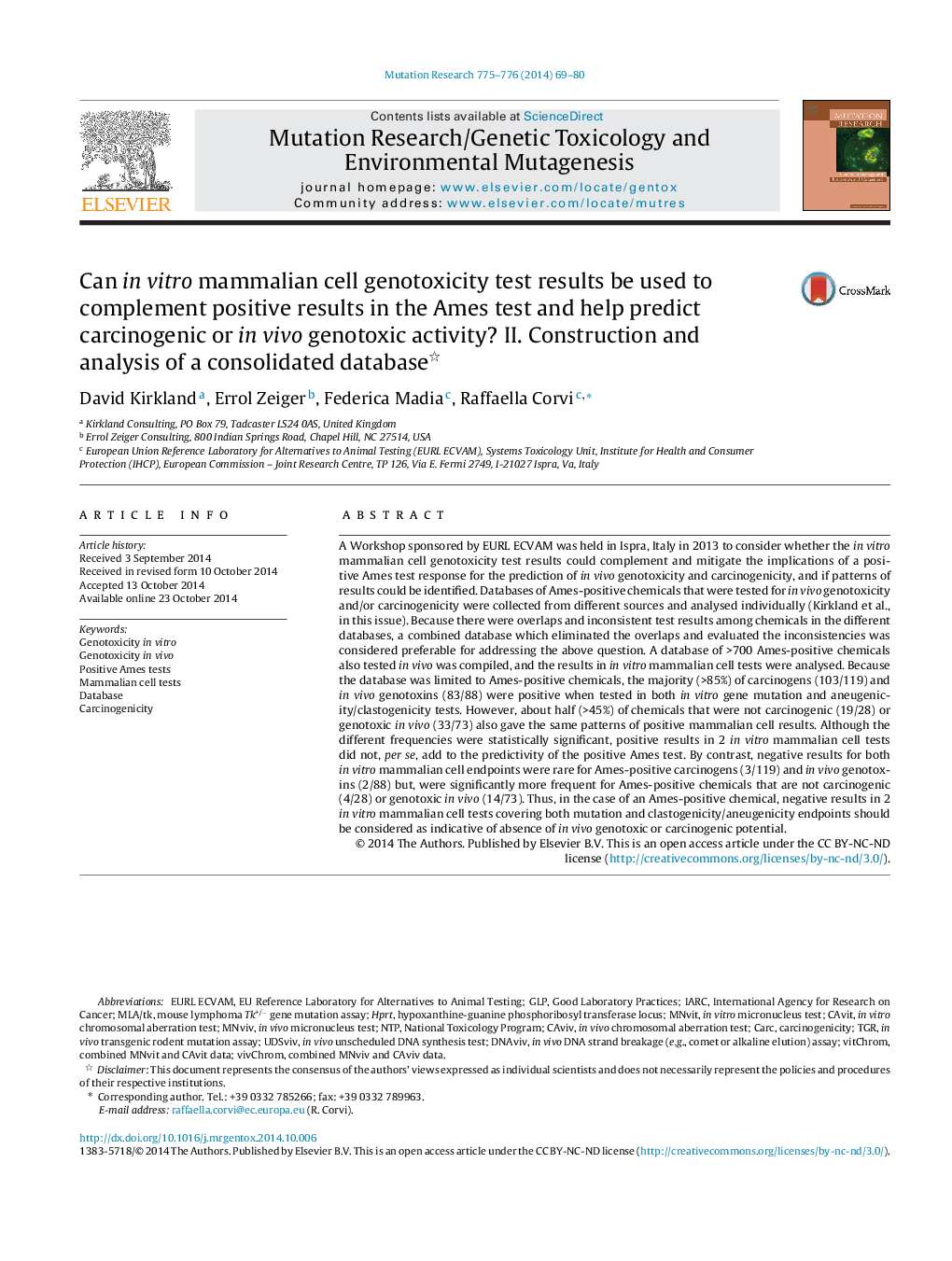| کد مقاله | کد نشریه | سال انتشار | مقاله انگلیسی | نسخه تمام متن |
|---|---|---|---|---|
| 8456452 | 1548586 | 2014 | 12 صفحه PDF | دانلود رایگان |
عنوان انگلیسی مقاله ISI
Can in vitro mammalian cell genotoxicity test results be used to complement positive results in the Ames test and help predict carcinogenic or in vivo genotoxic activity? II. Construction and analysis of a consolidated database
دانلود مقاله + سفارش ترجمه
دانلود مقاله ISI انگلیسی
رایگان برای ایرانیان
کلمات کلیدی
NTPTGRHprtGLPEURL ECVAMCAvitIn vivo micronucleus testGenotoxicity in vivoGood Laboratory Practices - آزمایشات خوبIn vitro micronucleus test - آزمایشی میکروسکوپی in vitroIARC یا International Agency for Research on Cancer - آژانس بین المللی تحقیقات سرطانInternational Agency for Research on Cancer - آژانس بین المللی تحقیقات سرطانDatabase - بانک اطلاعاتی، دادِگان یا دِیتابِیسNational Toxicology Program - برنامه سم شناسی ملیCarcinogenicity - سرطان زاییCarc - کارک
موضوعات مرتبط
علوم زیستی و بیوفناوری
بیوشیمی، ژنتیک و زیست شناسی مولکولی
تحقیقات سرطان
پیش نمایش صفحه اول مقاله

چکیده انگلیسی
A Workshop sponsored by EURL ECVAM was held in Ispra, Italy in 2013 to consider whether the in vitro mammalian cell genotoxicity test results could complement and mitigate the implications of a positive Ames test response for the prediction of in vivo genotoxicity and carcinogenicity, and if patterns of results could be identified. Databases of Ames-positive chemicals that were tested for in vivo genotoxicity and/or carcinogenicity were collected from different sources and analysed individually (Kirkland et al., in this issue). Because there were overlaps and inconsistent test results among chemicals in the different databases, a combined database which eliminated the overlaps and evaluated the inconsistencies was considered preferable for addressing the above question. A database of >700 Ames-positive chemicals also tested in vivo was compiled, and the results in in vitro mammalian cell tests were analysed. Because the database was limited to Ames-positive chemicals, the majority (>85%) of carcinogens (103/119) and in vivo genotoxins (83/88) were positive when tested in both in vitro gene mutation and aneugenicity/clastogenicity tests. However, about half (>45%) of chemicals that were not carcinogenic (19/28) or genotoxic in vivo (33/73) also gave the same patterns of positive mammalian cell results. Although the different frequencies were statistically significant, positive results in 2 in vitro mammalian cell tests did not, per se, add to the predictivity of the positive Ames test. By contrast, negative results for both in vitro mammalian cell endpoints were rare for Ames-positive carcinogens (3/119) and in vivo genotoxins (2/88) but, were significantly more frequent for Ames-positive chemicals that are not carcinogenic (4/28) or genotoxic in vivo (14/73). Thus, in the case of an Ames-positive chemical, negative results in 2 in vitro mammalian cell tests covering both mutation and clastogenicity/aneugenicity endpoints should be considered as indicative of absence of in vivo genotoxic or carcinogenic potential.
ناشر
Database: Elsevier - ScienceDirect (ساینس دایرکت)
Journal: Mutation Research/Genetic Toxicology and Environmental Mutagenesis - Volumes 775â776, December 2014, Pages 69-80
Journal: Mutation Research/Genetic Toxicology and Environmental Mutagenesis - Volumes 775â776, December 2014, Pages 69-80
نویسندگان
David Kirkland, Errol Zeiger, Federica Madia, Raffaella Corvi,